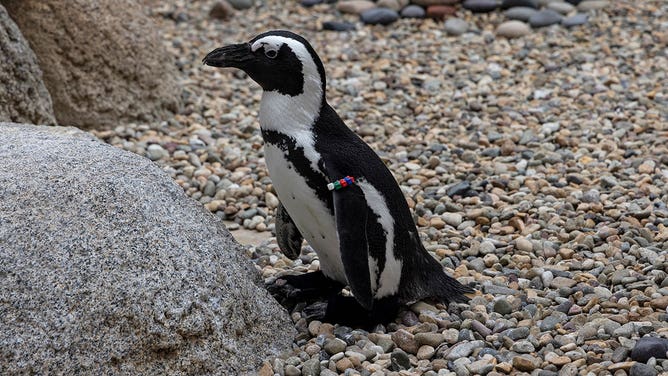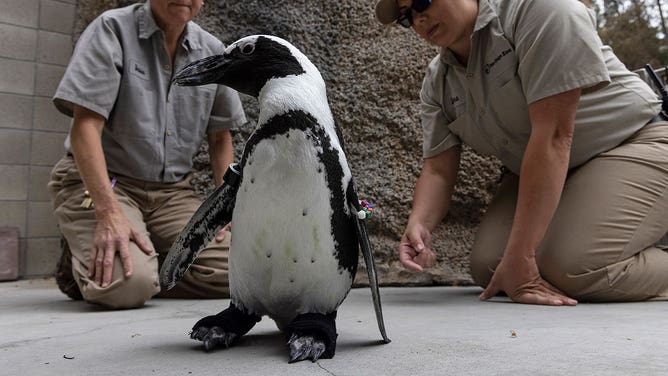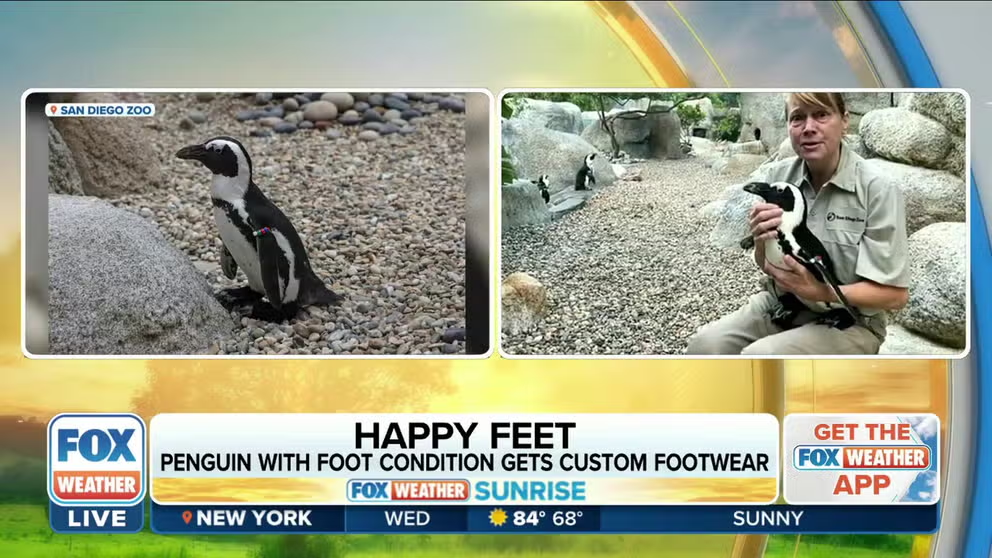Happy feet: Penguin has new spring in his step thanks to custom orthopedic shoes
Lucas, a 4-year-old African penguin at the San Diego Zoo, suffers from bumblefoot – a degenerative avian foot condition.
San Diego Zoo penguin gets fitted with custom orthopedic shoes
Team members, with the help of Thera-Paw, a national organization that designs and manufactures rehabilitative and assistive products for animals with special needs, created and fitted Lucas with custom orthopedic shoes made of neoprene and rubber, to prevent pressure sores from developing on his feet and ankle when he stands and walks.
SAN DIEGO – A penguin at the San Diego Zoo was waddling a little taller this week thanks to a pair of custom shoes.
Lucas, a 4-year-old African penguin, developed a spinal infection early in life, which left him with weak muscles in his legs and an inability to stand upright on his toes properly, according to a news release from the San Diego Zoo. It's a condition known as bumblefoot. This caused him to rest on parts of his ankles that normally would not touch the ground, leading to sores on his feet and legs.
After treatments failed, zookeepers contacted Thera-Paw, a group specializing in creating assistive and rehabilitative products for special-needs animals.
The team created molds of Lucas’ feet to aid them in creating the perfect padded booties. Zookeepers said the shoes should protect the lesions already on his feet and minimize the development of new sores.
7 THINGS YOU PROBABLY DON’T KNOW ABOUT PENGUINS

Lucas, a 4-year-old African penguin, sports his new orthopedic shoes while roaming around his habitat at the San Diego Zoo in August 2022.
(San Diego Zoo)
"The boots are cushioned and Velcroed in place, so they will help Lucas to fully participate in the colony and showcase behaviors that are more typical for a penguin -- such as climbing the rocks, swimming, nesting and finding a suitable mate," said Dr. Beth Bicknese, senior veterinarian at the San Diego Zoo.
Zookeepers said they’ve noticed many changes in Lucas since he got his new rubber-and-neoprene kicks, including a better ability to navigate his rocky habitat, improved posture and greater balance.
"We were pleasantly surprised at the immediate change in Lucas after we fitted him with his new boots," said Debbie Denton, senior wildlife care specialist at the San Diego Zoo. "Seeing him move about now gives us hope that he may be OK going forward and able to live a full life."
LOOKING FOR LOVE BUT CAN'T FIND A PENGUIN MATE

Zookeepers at the San Diego Zoo examine Lucas, a 4-year-old African penguin, after he was fitted with his custom orthopedic boots in August 2022.
(San Diego Zoo)
African penguins are endangered. According to zoo officials, about 18,000 breeding pairs of the fowls exist today. That’s down from the estimated 1 million pairs during its peak. Climate change, over-fishing of its food supply, pollution and avian influenza A contribute to its decline.
